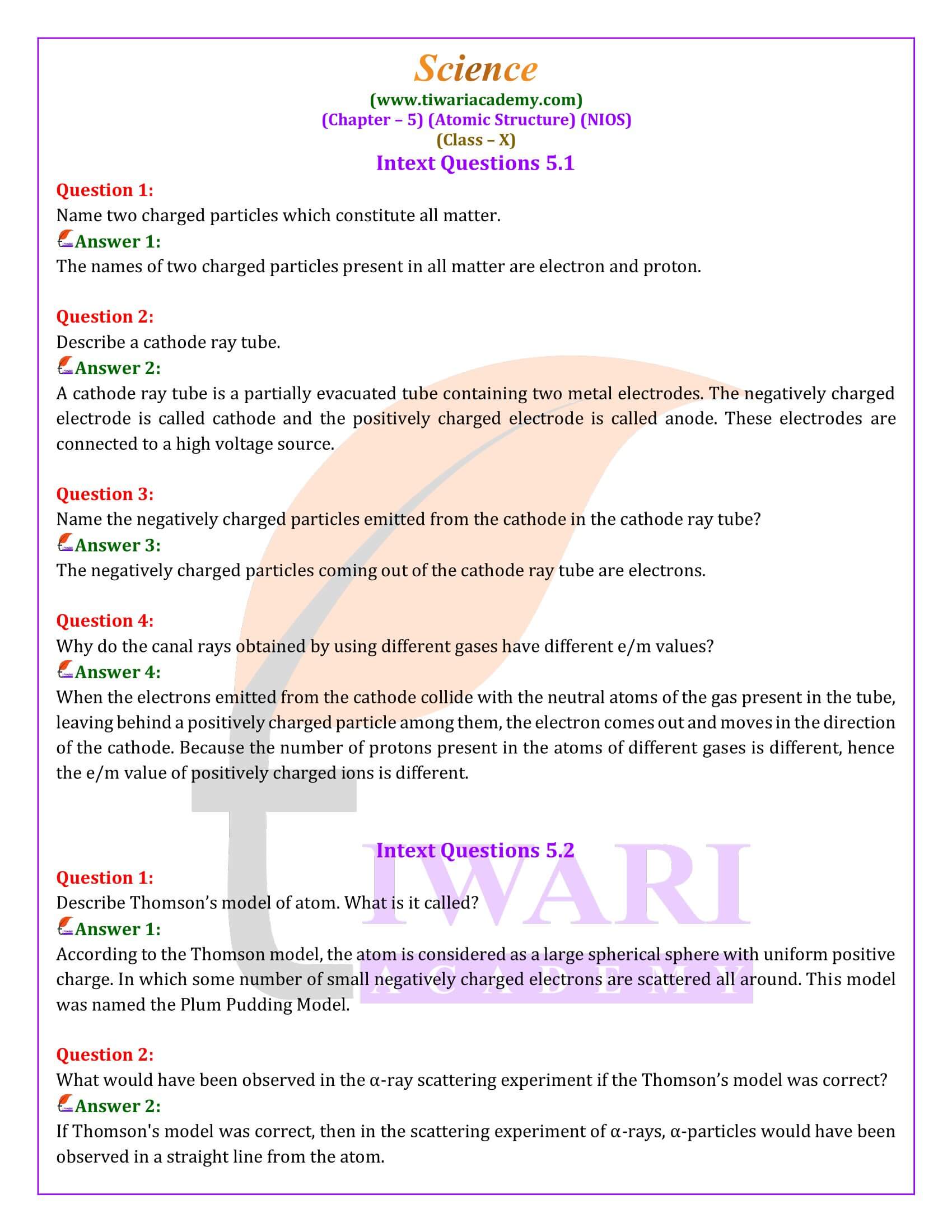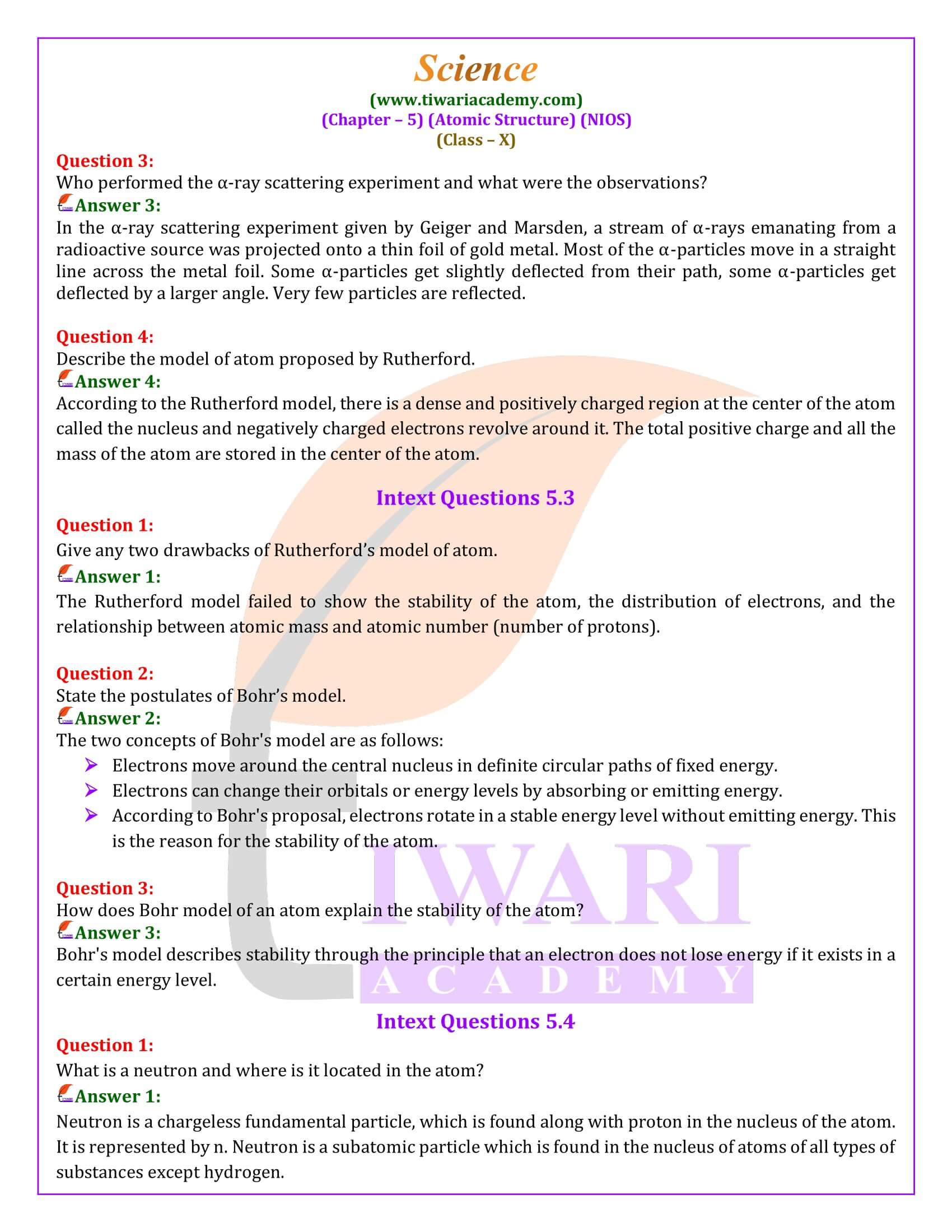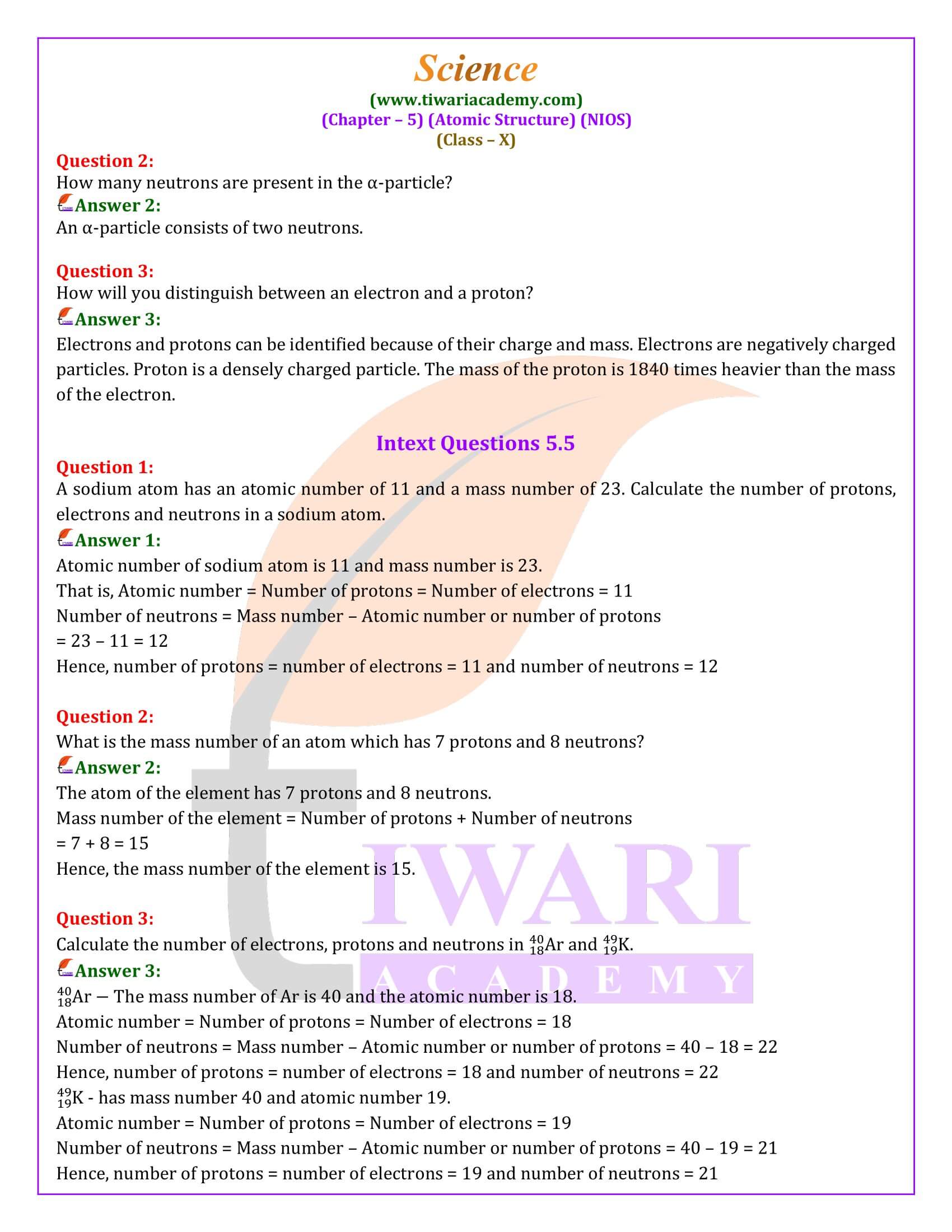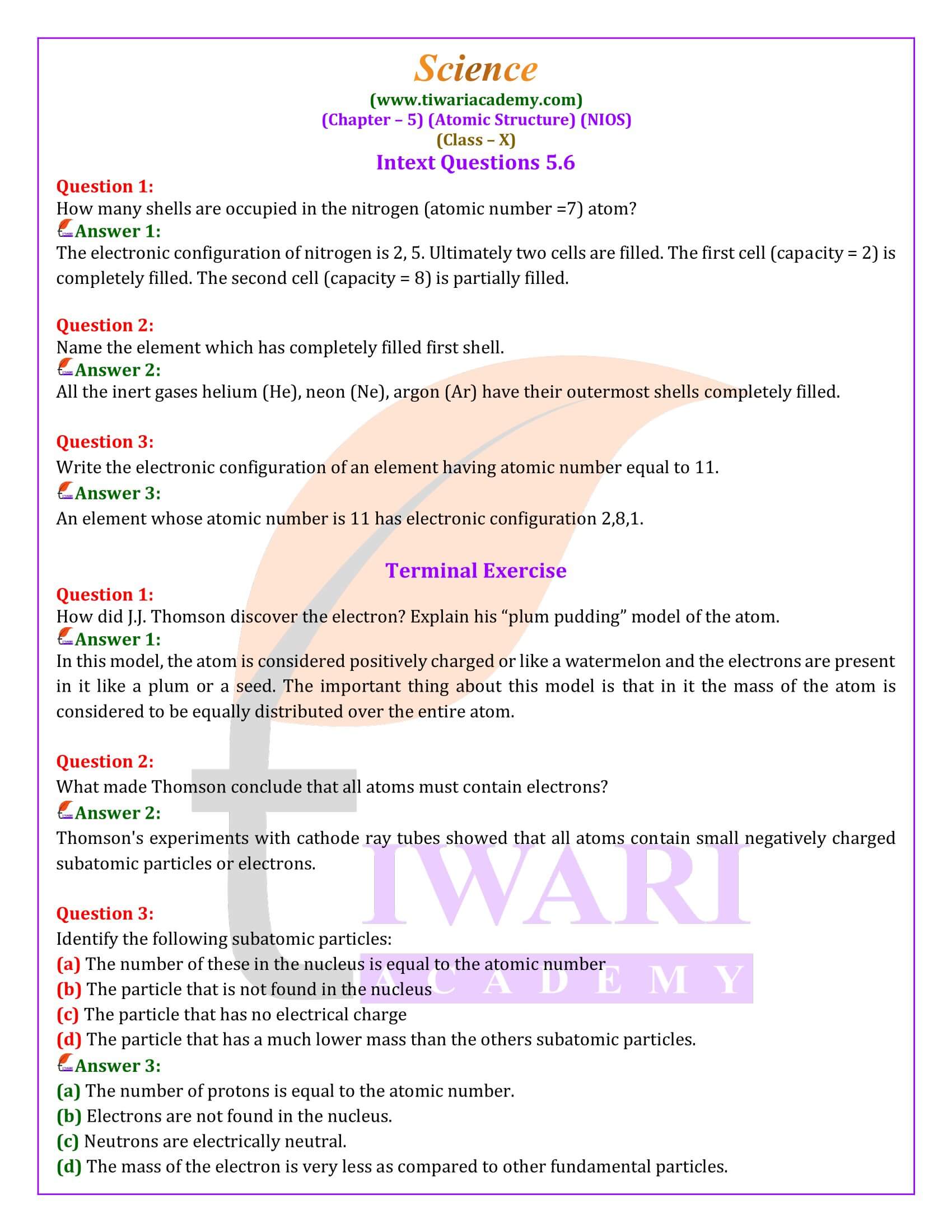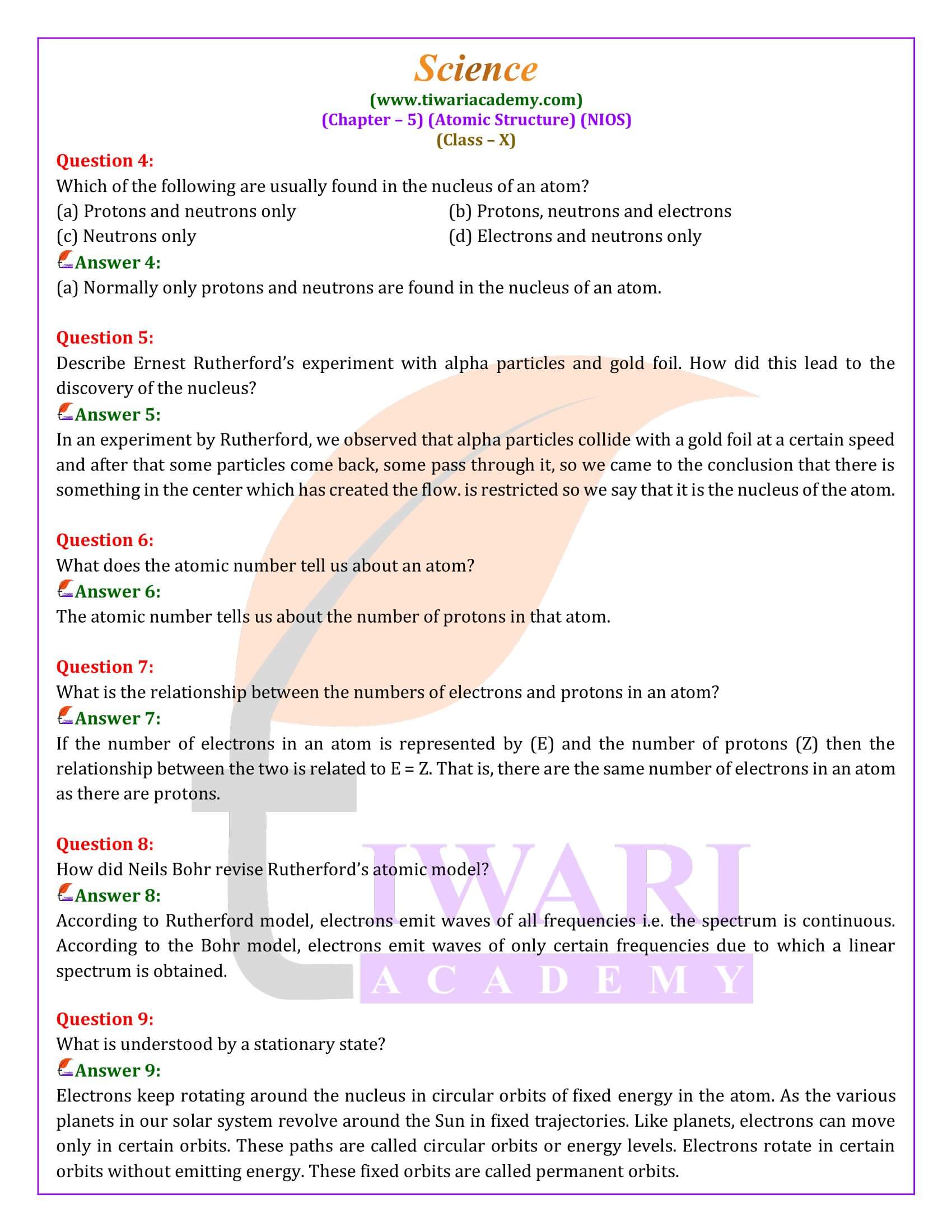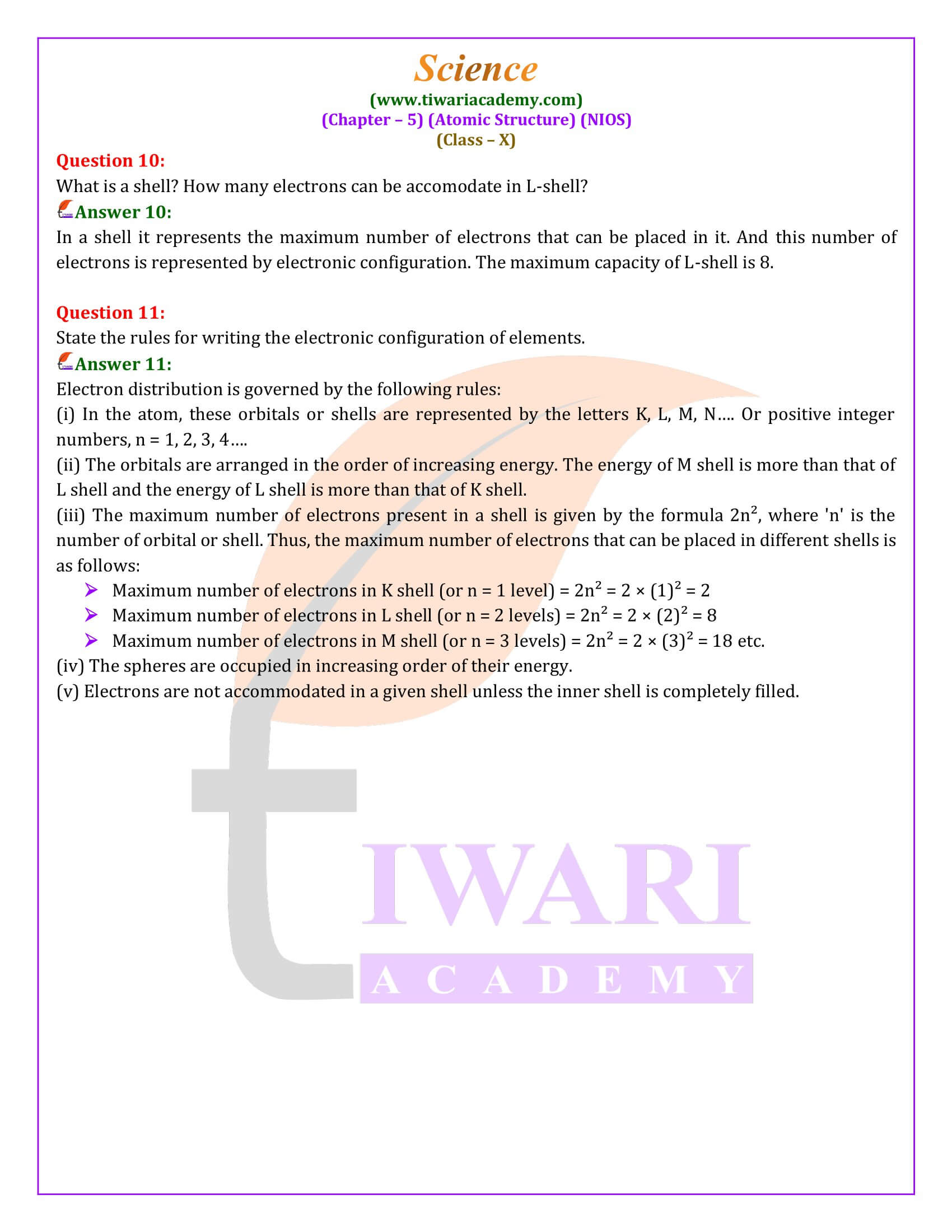NIOS Class 10 Science Chapter 5 Atomic Structure solutions and chapter description are given here in English and Hindi Medium for new session. Student of NIOS or National Institute of Open Schooling can prepare their Science chapter 5 question answers with the explanation given here.
Understanding the Atomic Structure
The chapter 5 in NIOS Science on Atomic Structure unfolds the intricate details of atoms, the fundamental building blocks of matter. Initially perceived as indivisible entities by Dalton, atoms are now known to be a complex assembly of smaller constituents, challenging Dalton’s early 19th-century atomic theory. This chapter navigates through the historical progression of atomic theory, highlighting key discoveries and models that have shaped our current understanding of atomic structure.
The journey begins with the discovery of sub-atomic particles, such as electrons and protons, marking the atom’s divisibility. These discoveries laid the foundation for various atomic models, explaining the atom’s structure and the distribution of its constituents. The chapter meticulously explains the evolution of atomic models, from Thomson’s plum pudding model to Rutherford’s nuclear model, and finally to Bohr’s model, each addressing the limitations of its predecessor and providing deeper insights into the atom’s structure.
Cathode Ray Experiments
Electrons, identified through cathode ray experiments by Sir William Crookes and further characterized by J.J. Thomson, were the first sub-atomic particles to be discovered, leading to the realization that atoms were not indivisible as previously thought. Following this, the discovery of protons by Eugen Goldstein, through experiments using perforated cathodes, and the discovery of neutrons by James Chadwick, added to the complexity of the atom, revealing it as a neutral entity composed of charged particles.
Shortcomings of Early Atomic Models
The chapter 5 describes the shortcomings of early atomic models and how they were overcome. Rutherford’s gold foil experiment debunked the plum pudding model, suggesting the existence of a dense nucleus around which electrons orbit. However, this model couldn’t explain the stability of atoms, leading to Bohr’s revolutionary model, which introduced the concept of quantized energy levels and stationary orbits for electrons, solving the puzzle of atomic stability.
Furthermore, the NIOS Science chapter 5 introduces the concept of atomic number and mass number, explaining how they relate to the composition of the nucleus and the overall structure of the atom. It provides a clear understanding of isotopes and isobars, and the significance of average atomic mass.
Electronic Configuration
The distribution of electrons in different shells or energy levels, known as the electronic configuration, is thoroughly discussed, highlighting how it determines the chemical properties and reactivity of elements. The concept of valency, deriving from the electronic configuration, is explained in the context of chemical bonding and the stability of atoms, adhering to the octet rule.
The chapter on Atomic Structure is a comprehensive exploration of the atom’s constituents, their arrangement, and the theories developed over time to understand the complex nature of atoms. It not only presents the historical milestones in the development of atomic theory but also lays the groundwork for understanding chemical bonding, the periodic table, and the chemical behavior of elements, pivotal for advancing studies in chemistry and related sciences.
